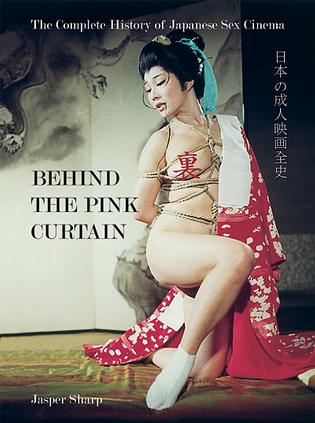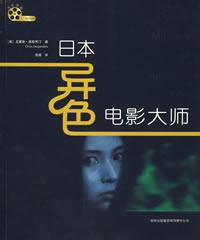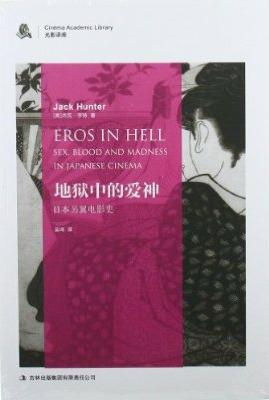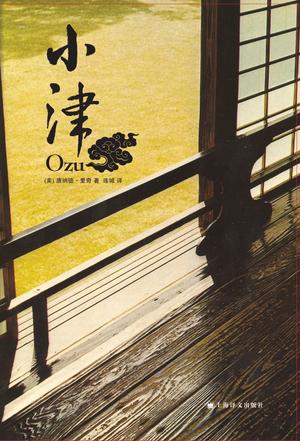欢迎来到相识电子书!
标签:日本映画书系
-
Behind the Pink Curtain
Steamy, subversive, exotic and bizarre! Behind the Pink Curtain takes the reader on a wild joy ride deep into the hinterlands of Japanese culture, society and radical politics by way of the weird and wonderful world of the Pink Film and Roman Porno genres. Behind the Pink Curtain focuses on the art and industry of one of the most notorious sectors of Japanese filmmaking, the erotic Pink Film, or pinku eiga genre, and the closely related Roman Porno films produced by Nikkatsu studios from 1971 to 1988. A phenomenon distinct from the cheaply-produced hardcore Adult Video (AV) market, from the early '60s onwards major Japanese film studios and independent producers alike have kept up a conveyor belt level of output of pornographic features intended purely for cinema release. Still today, just short of 100 such titles are shot on 35mm every year intended for screening in a specialist network of adult cinema across the nation. In recent years, many have found themselves released on DVD in the West or screened at international film festivals, while many of Japan's most noted filmmakers today have cut their teeth in this industry. Just how close are the links between the arthouse and the grindhouse in Japan? Read about the ins and outs of Japanese censorship from the wartime onwards, and how topless deep sea diving girls came to woo local audiences in the '50s. Learn how a TV nature documentary maker ended up helming nude female Tarzan movies, and how '60s mavericks Kôji Wakamatsu and Masao Adachi met up with John and Yoko at Cannes while on the way to the Golan Heights to make a film about Palestinian revolutionaries. How Deep Throat's Harry Reems wound up in Tokyo starring in a zany sex comedy about a penis transplant gone awry, and how one of Japan's most famous literary figures ended up the subject of the country's first gay porno movie. How one of Nikkatsu's leading directors went it alone to make a film about powerboat racing and ended up in the bad books of the yakuza, and how the anti-Bush sex farce Horny Home Tutor: Teacher's Love Juice came to be re-titled as The Glamorous Life of Sachiko Hanai and became one of the most talked-about Japanese films of recent years, playing at over twenty international film festivals. Based on extensive interviews with many of the leading figures in the field, Behind the Pink Curtain is a colourful and exhaustive trawl through Japan's most vibrant and prolific filmmaking sector. CONTENTS: Chapter 1: The Japanese Sex Film: Art or Industry? An introduction to the world of pinku eiga, some facts, some definitions and a brief historical overview, looking at the state of the modern distribution network and who actually watches these films. Chapter 2: Sex, Censorship and Other Positions of Power: New Ways of Looking Is the pink film art or pornography? What is pornography anyway, and does it mean the same in Japan as over here? An introduction to Japan's obscenity laws and censorship history, within the context of the international development of erotic cinema. Chapter 3: Ama Glamour and the Rise of the Flesh Actress An overview of the output of Shintoho in the 50s, who introduced nudity to Japanese screens with films such as those in the Ama, or Girl Diver movies such as Girl Divers at Spook Mansion and Revenge of the Pearl Queen. Chapter 4: The Birth of the Eroduction The beginnings of the pink genre in 1962 with Satoru Kobayashi's Flesh Market and Koji Seki's legendary female Tarzan films and the formation of Kokuei, Okura Productions and the new Shintoho. Chapter 5: Pioneers of the Pink Film Introducing the early trailblazers of the pink film world and their work - Kan Mukai, Koji Seki, Satoru Kobayashi, Mamoru Watanabe and Shinya Yamamoto. Chapter 6: Pinkos in Pink Pink gets political. This chapter investigates how the pink film came to echo the radicalism of ultra-leftist groups on the streets of Tokyo, and details the political landscape of the era. Chapter 7: Emerging from the Underground: Wakamatsu Pro We investigate the major role played by Koji Wakamatsu and his coterie in bringing avant-garde pop culture, porn and politics to a wider market. Chapter 8: Eiga / Kakumei: The Story of Masao Adachi A survey of the radical films of Wakamatsu's partner-in-crime Masao Adachi. Chapter 9: The Golden Dawn of the New Porn: Nikkatsu's Roman Porno The sex film goes mass market in Japan, with the birth of Nikkatsu's Roman Porno line in 1971. Chapter 10: Roman Porno: The Films, Their Makers and Their Stars A closer look at some of Nikkatsu's top Roman Porno directors and their films. Chapter 11: Eros International International co-productions and international distribution - was the pink film ever a purely Japanese phenomenon? Chapter 12: I Am Curious (Pink) - An Industry in Flux The pink film underwent significant changes in the 70s, with the arrival of Roman Porno, and yet its output remained as strong as ever. A look at the major production companies of the decade, their staff and their films. Chapter 13: The Decade of Excess Japanese sex films became renowned for their excessive depictions of violence, rape and sadomasochism, but was it always this way, or was this a purely 80s development, and if so, why? Chapter 14: The Four Devils and the Pink Nouvelle Vague The renaissance of the pink film in the early 90s, following the death of Roman Porno and the arrival of Adult Video. Chapter 15: The Devils Themselves.... An overview of the films of the directors known as the Four Devils: Kazuhiro Sano, Hisayasu Sato, Toshiki Sato and Takahisa Zeze. Chapter 16: Girls and Boys Come Out to Play The modern-day audience for the pink film is more diverse than one might expect. This chapter looks at female viewers, female directors and the gay sub-sector of the pink film genre. Chapter 17: 21st Century Girl and the Seven Lucky Gods The latest new wave of pink directors known as the Seven Lucky Gods, including Mitsuru Meike, Shinji Imaoka and Yuji Tajiri have captured the attention of a new generation of audiences and have had their works screened widely abroad. But are they a continuation of or a reaction against their predecessors the Four Devils? Chapter 18: Final Curtain? In the era of DVD and the internet, is there still a market for the theatrical sex films, and where might the industry be heading in the future? Appendices: - List of Japanese titles, cast and credits and DVD availability. - Bibliography. -
日本异色电影大师
本书中所提及的全部电影制作者均不同程度地代表了日本的“异色(叛逆)电影制作者”。其中的一些导演,如深作欣二和佐藤纯弥,以不事渲染的方式,创造了社会-经济的后台故事(backstory)的丰富多彩图景,以及对日本黑社会的残酷、极端暴力性的考察而揭出其背后的的政治背景,从而重新定义了类型电影特别是黑帮电影。另外一些导演,例如工藤荣一和池广一夫,则在主流制片厂还在推销其自以为万无一失的俗极而流和多愁善感的电影时,在时代剧的武士电影中开创了一种难得一见和现实主义的手法。冈本喜八则象铃木清顺一样,为类型电影带来了一股令人振奋的、冒天下之大不匙的生机勃勃的活力,并以一种极能掩人耳目的轻松劲儿,在尖刻的讽刺电影和悲剧现实义电影领域中收放自如。长谷部安春则是谦逊的动作电影的行家里手,除了喜欢以一种半开玩笑半认真的劲头制作蛋奶酥,更擅长于拍摄冷酷的犯罪影片。石井辉男则是独立导演中的惟一一位异数,他能够通过巧妙地耍花枪而在制片厂体制里拍片数十年,在此争得自己的时间拍摄想拍的影片,虽然偶有失手的平庸陈腐之作,更多的是将他反传统的感受和视觉上的鲜明特色融入他所做的任何影片当中。他同样也是一个开拓者,将十九世纪的歌舞伎的色欲/怪诞传统融会贯通为六七十年代一系列恐怖表演(Grand Guignol)式的电影中。铃木清顺是另一位在制片厂体制下拍片超过十年的独立导演,不过对比起石井辉男,他基本上是个更强烈的对抗主义者,更不愿意和制片厂玩游戏。他全力投入于打开陈腐形式的信封,直至其被撕裂,而当这一切发生的时候,他被片厂领导炒了鱿鱼。从第三部影片开始,他的电影就是将陈腐的材料打磨到几乎使人难以承认的令人称奇的范例,他在所有矫饰的类型影片中表现出新颖和高度娱乐性的特质,它忠于观众对类型电影的期望,但同时对于类型又莫明其妙地进行了令人目炫神迷的解构。筱田正浩是一桩可疑的个案,他是那种猛一看去非常具有艺术电影气质的导演,但根本上,他那虚无主义的、按照宇宙法则生存的存在主义的复杂世界观最后占据了上风。事实也表明,在过去的二十年里,他一再被电影杂志的编辑和影评人、那些只关注“严肃的”日本电影作者以及一些本应更了解他的人所视而不见。尽管他拍了很多非类型电影,然而在西方,他那非同寻常的类型片杰作如《狮子鬃毛上的眼泪》、《暗杀》、《异闻猿飞佐助》、《在盛开的樱花树下》和《魔鬼池塘》(Demon Pond),特别是《苍白的花》却并非广为人知并获得赏识。我猜想,人们或许会争论若松孝二是不是另一桩疑案。乍看上去,若松孝二似乎更适宜居住于阴影重重、最好被描绘为日本地下电影的电影地下世界里,这个舞台见证了更多的象慧星划过天空一般的“异色(叛逆)”天才的出现,从同为作家/导演的寺山修司到松本俊夫到足立正生和大和屋竺。不过毫无疑问,若松孝二是最为成功的一位导演,不仅在产量上――他拍了超过一百部电影――而且从影响来看也是如此。他制作的是被人贬低和鄙视的电影形式,从暴力的粉红电影到“实录”的系列杀手电影,他总是将令人吃惊、发自内心地将社会的、心理的和政治的背景带入几乎所有影片中(至少,是我看过的他大部分影片中)。多年以来,他一直将那些备受争议而让人尊敬的导演如大岛渚和深作欣二视为自己的朋友和同道,即便是对更为激进的艺术家如足立正生也是如此。 我也感到很有必要将“异色(叛逆)”类型电影黄金时代的至少两位演员(一男一女)包含进本书。千叶真一和梶芽衣子本身虽然不是电影制作者,他们一旦成为明星,就在自己参与的所有电影中形塑出自身的明星气质,他们通过自己在动作类型电影方面的不懈努力,而营造出自己的大于生命的超凡明星魅力。随着其出演的影片在世界范围内俘获越来越多的观众,他们的声名也在不断增长。 -
10年後韓国と北朝鮮はこう変わる
ソウルオリンピックを踏台に反日感情むき出しに日本を猛追する韓国。バツグンの経済成長率を誇っているが、これはどこまで続くか。果して日本に追いつけるのか。一方、日本のお隣りに位置しながら自由に行き来も出来ない謎だらけの北朝鮮。想像される経済破綻は一体どの程度のものか。金日成から金正日への世襲が本当に行われるのか。そして朝鮮戦争が再び勃発する可能性はあるか、それとも話し合いによる南北統一があり得るのか。本書は微妙にゆれる一触即発の朝鮮半島の10年後を、実証データを駆使してズバリ予測。 -
地狱中的爱神
《地狱中的爱神:日本另翼电影史》却用理性和严肃的学术态度详细地对它进行了解析。全书以日本桃色电影的发展史为主线,分八章分别介绍了不同时期不同种类的桃色电影,并重点分析了几位重量级大师如若松孝二、大岛渚、佐藤寿保、中野贵雄等的主要作品。 值得一提的是,作者第一次以一个外国人的眼光,从深层的社会文化背景和国民心理层次剖析了这一类型的电影在日本兴盛的原因以及特性。是一部电影艺术以及日本后现代文化研究方面不可多得的佳作。 -
小津
这本书是西方首部系统研究和介绍小津安二郎电影艺术的专著,也是著名日本电影专家唐纳德·里奇的代表作。里奇通过对小津电影的主题、编剧、拍摄、剪接之深入分析,窥探其电影文法与美学风格,并以此展现了蕴藏在小津作品中的日本历史、社会及文化意涵。
热门标签
下载排行榜
- 1 梦的解析:最佳译本
- 2 李鸿章全传
- 3 淡定的智慧
- 4 心理操控术
- 5 哈佛口才课
- 6 俗世奇人
- 7 日瓦戈医生
- 8 笑死你的逻辑学
- 9 历史老师没教过的历史
- 10 1分钟和陌生人成为朋友





